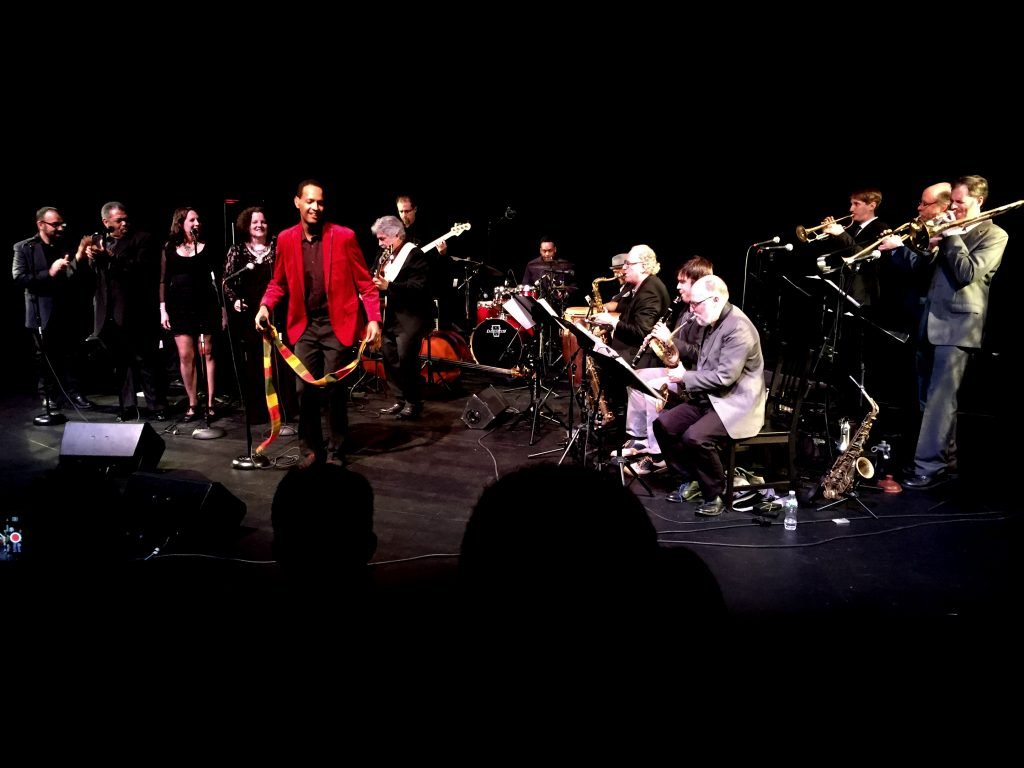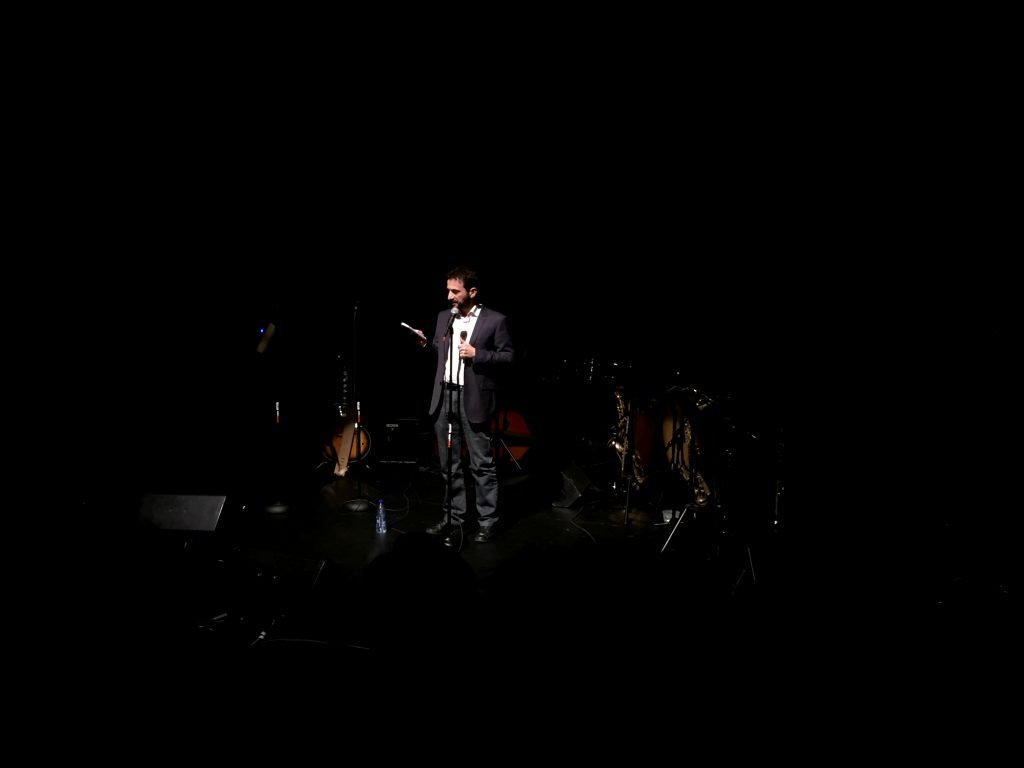WATERTOWN, Mass. (A.W.)—Hundreds packed into the Dorothy and Charles Mosesian Theatre for the Arts in Watertown on Feb. 19 to take in the sold-out tribute concert “The Emperor, the Nalbandians and the Dawn of Western Music in Ethiopia,” dedicated to Ethiopian music icon Nerses Nalbandian.

The concert, which was organized by the Friends of Armenian Culture Society (FACS), featured the Grammy-nominated Either/Orchestra, directed by Russ Gershon, as well as vocalists performing songs in four languages: Bruck Tesfaye of the Debo Band (Amharic), Ronald Murphy (English), Serena Tchorbajian (Armenian), and Manolo Mairena (Spanish).
The program opened with remarks by FACS Executive Board Secretary Armineh Mirzabegian M.D., who welcomed guests and music enthusiasts. “Tonight’s program explores the major contributions by a member of a minority group in an adopted homeland,” Mirzabegian said, “The story of Nerses Nalbandian and the evolution of modern Ethiopian music is closely connected to the 40 Armenian orphans—survivors of the 1915 genocide—and their subsequent settlement in Ethiopia as members of the Royal Brass Band in 1924. Their story is that of resilience and triumph in the face of calamity.”
Mirzabegian went on to say that FACS was honored to have the opportunity to pay tribute to Nalbandian and to help share his story and his musical legacy, and welcomed members of the Nalbandian family, who had traveled from Montreal, Toronto, and Ohio, to be in attendance.
Mirzabegian then invited Armenian scholar Dr. Boris Adjemian, the director of the Armenian General Benevolent Union (AGBU) Nubar Library in Paris, who delivered an overview of the Armenian community of Ethiopia. Adjemian’s talk focused on the history of the Ethiopian-Armenian community and the fact that Nalbandian’s success in revolutionizing modern Ethiopian music is a part of a larger history that was shared by the Ethiopian and Armenian people.

Adjemian explained that Armenian immigration to Ethiopia began before the Armenian Genocide—the end of the 19th century—and estimated that just prior to WWI, about 200 Armenians lived in Ethiopia. Despite being such a small percentage of the overall population, Adjemian said that the Armenians of Ethiopia were one of the four main minority groups in the country at the time.
Adjemian said that following the Armenian Genocide, the number of Armenians in Ethiopia reached about 1,200 in the 1920’s, which remained consistent until the Ethiopian revolution in 1974. Throughout the years, the Armenians became an influential minority within the country, according to Adjemian.
Adjemian went on to chronicle the story of the 40 orphans of the Armenian Genocide, who, in 1924, were adopted and brought to Ethiopia by the future emperor Haile Selassie, after he saw them performing in Jerusalem’s Armenian quarter.
After Adjemian’s short presentation, members of the Either/Orchestra took the stage, under the leadership of Russ Gershon, who presented the members of the band and their love for Ethiopian music. Gershon explained that in 2004, during their first visit to Ethiopia, the Either/Orchestra was heard by Nalbandian’s adult children, who invited Gershon and the band to revive Nerses’ long-unplayed music for the theater orchestra.
The Either/Orchestra then played their renditions of Nalbandian’s works as well as three works by composers and artists that inspired Nalbandian, including Komitas Vardapet’s “Kele Kele.” Nalbandian’s son Harout Nalbandian, who was attending the event from Montreal, also joined the Either/Orchestra on stage to play the guitar for one song and to share his reflections about his father and his legacy.


Be the first to comment